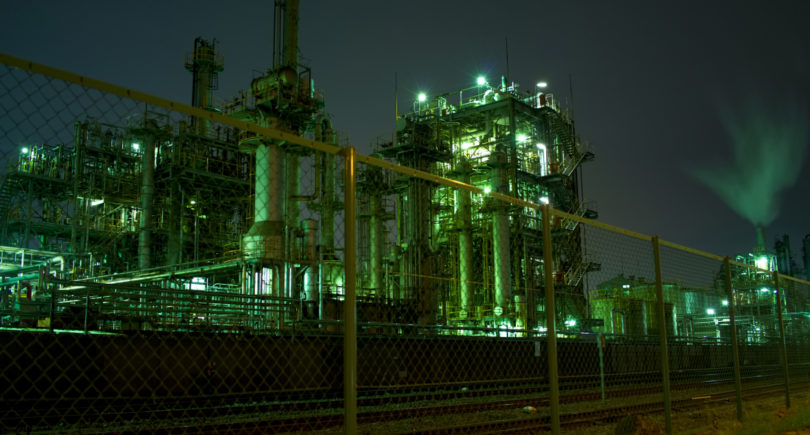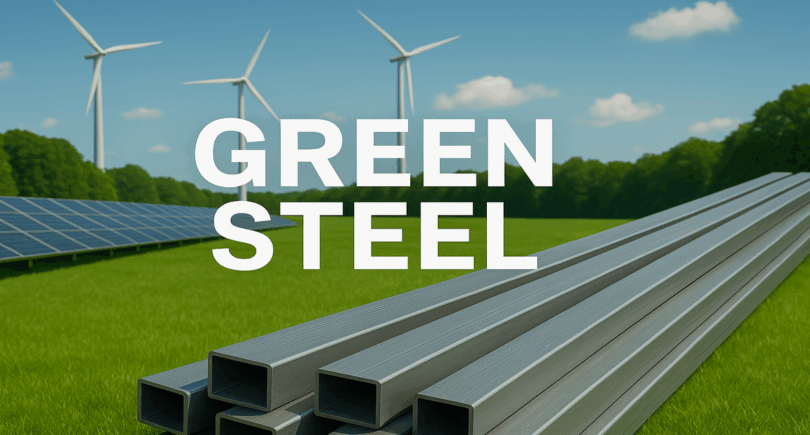
Posts Green steel decarbonization 907 15 October 2021
The green energy transition will require over 2 billion tons of steel and the interaction of business with the state
The green energy transition is a global trend in climate and economic policy, which entails the need for a radical restructuring of entire industries. The role of metallurgy in this process is very important, since the key solutions for achieving carbon neutrality in energy, construction, transport and engineering are based on the use of steel. According to the GMK Center, the implementation of plans for a global green energy transition in various industries by 2050 will require at least 2 billion tons of steel. This was discussed by the experts at the round table “Features of the green energy transition and the role of metallurgy” hosted by the GMK Center.
“Thanks to the green energy transition, existing sectors of the economy will change their appearance. The construction, transport, energy and industry sectors must be completely restructured, which will change the structure of the economy. This is impossible without metallurgy as a steel producer. For a green transition, you need green steel. In other words, metallurgy needs decarbonization, but the decarbonization of other industries also depends on metallurgy,” said the head of the GMK Center during the round table Stanislav Zinchenko.
He added that for the green energy transition, the consistency of state policy is very important, since the implementation of environmental goals is always the result of interaction between the state and business.
Director of the Center for Economic Innovation, adviser to the Prime Minister Kirill Krivolap said that now at the level of the Ministry of Energy there are at least three projects related to the green transition. Firstly , consulting company KPMG is developing the National Energy Strategy. It is assumed that by the end of the year decisions on market models, incentives, balances will be known, and a forecast for the production and consumption of electricity will be formed. Secondly , consulting company Roland Berger is developing a draft National Hydrogen Strategy. Third project is related to updating the plan for the development of renewable energy, which is being written by one of the industry associations.
“Several projects are moving towards converging at one point, actually laying the foundation for a nationwide strategy for a green energy transition,” Kirill Krivolap explained.
He noted that the approach to the energy strategy in Ukraine is strongly displaced towards energy independence. The reasons are clear – the rejection of Russian gas. This approach implies the emergence of new energy sources and also the widespread replacement of this gas: the development of energy production from biomass, the development of renewable energy sources, the emergence of entire sectors of the economy aimed at a green transition.
Green energy
To reduce CO2 emissions all industries need green electricity. The IEA predicts a 2.7 times increase in electricity generation by 2050. By that time, almost 90% of electricity will be generated from renewable resources, which will create additional demand for steel for the construction of renewable energy facilities.
According to GMK Center estimates, the global energy sector will need 1.7 billion tons of steel for the green transition. This is comparable to the current annual volumes of world steel production.
“The development of almost all areas of renewable energy and distribution networks is based on the use of steel,” said an analyst at GMK Center Andrey Glushchenko.
He explained that steel is used for the production of photovoltaic panels, pumps, tanks, heat exchangers in solar power plants, for the manufacture of power transmission poles in distribution and supply systems. Steel is also a base material in renewable energy, where it is used, for example, to make wind turbine masts. According to GMK Center estimates, in 2021-2050 solar energy will need 566 million tons of steel, and wind energy – 1129 million tons.
“Now the share of green generation in the total energy mix reaches 8%, if we talk exclusively about the sun and wind. If we add the hydropower component, then the share of renewable energy will be 12%, – noted Natalia Slobodyan,head of the Climate Change and Ecology Department at DTEK. – “Ukraine’s energy strategy provides for a more ambitious long-term goal: by 2035, green energy should account for 25% of primary energy consumption.” .
According to Natalia Slobodyan, the construction of new renewable energy facilities is impossible without investments in this industry.
“Attracting investments, in turn, depends on the creation of transparent regulatory conditions, clear and the same for all the rules of the game, and the fulfillment of state obligations to investors,” she noted.
The chairman of the board of the Ukrainian Wind Energy Association Andrey Konechenkov agrees with her opinion.
“The position of the government, as recorded in the second Nationally Determined Contribution to the Paris Climate Agreement, is that CO2 emissions it is supposed to be reduced only by reducing the use of coal. The development of alternative, green energy is considered a complex topic. When we have a dialogue between market players and the government, green energy will develop much faster,” Andrey Konechenkov is sure.
Green hydrogen
Although Ukraine has declared its desire to occupy the niche of a producer of green hydrogen for the European market, the implementation of these plans is still in question. As Andrey Konechenkov noted, for the production of green hydrogen, green electricity is needed, and it is still produced too little.
“Hydrogen produced using atomic energy, which could be produced by Ukraine – conditionally yellow – Europe does not need. France, which also has a lot of nuclear power, is quite capable of producing it there. Therefore, they are ready to receive from us only green hydrogen, which will be produced using renewable energy sources,” he explained.
The second problem that could hinder the implementation of plans to supply new fuel to Europe is the lack of suitable distribution channels. As the Director for Integrated Communications of joint-stock company “Naftogaz” explained Maxim Bilyavsky, transportation of gas-hydrogen mixtures and hydrogen through the Ukrainian gas transmission system is practically impossible from the point of view of hydraulics.
“There will be a loss of resource on the way of pumping and other phenomena associated, for example, with the selection of gas. The mode of movement of the gas-hydrogen mixture will be influenced by the groups of gas distribution networks and gas outlets connected to the main gas pipeline system. Then we will have to compensate for the pressure loss in the gas pipeline branch with the corresponding injection pressure of the hydrogen itself. These are very complex calculations that need to be constantly optimized,” he explained.
According to “Naftogaz’s” calculations, the use of pipelines for the transportation of gas-hydrogen mixtures and hydrogen is possible only if consumer access to the gas transmission system is limited, and the length of the pipeline itself does not exceed 50-70 km.
But, probably, in the near future, hydrogen as a fuel may not be needed.
“Hydrogen technologies and carbon dioxide capture, which are now actively discussed in our space and with which we mostly associate energy transformation, are just components of the strategy of global corporations, along with other measures. According to our observations, hydrogen is considered in cases where electrification is impossible. Or when it is not possible to reduce emissions in other ways. That is, when other measures did not work,” said Oksana Roman, head of Energy Transformation in Central and Eastern Europe at Bilfinger Tebodin.
Green building
The GMK Center study says that construction and real estate are the main sources of greenhouse gas emissions in the world. They account for 38% of global emissions, with 10% (3.5 billion tons of CO2 ). Another 28% of emissions (10 billion tons of CO2 ) are formed during the operation of buildings (operational emissions) as a result of energy consumption for heating, air conditioning, lighting, etc. In the coming years, significant efforts and investments will be directed to reduce emissions in this direction. The IEA expects emissions from the construction sector should be reduced by 50% by 2030 to meet its carbon neutrality goals. And by 2050, operational emissions should drop to zero.
“It is possible to reduce emissions in construction and real estate by reconstructing and extending the life of existing buildings, using materials produced with lower emissions, using materials suitable for subsequent processing, and improving the energy efficiency of buildings,” explained GMK Center Chief Analyst Andrey Tarasenko.
He said that recently the concept of ZEB (zero energy building) has been gaining popularity. These are buildings that generate as much energy as they consume, or even more. The concept provides for the application of a number of energy efficiency solutions together with renewable energy facilities. Moreover, these solutions are based on the use of steel for fixing solar panels, steel window systems, energy piles, sandwich panels, and so on.
The bulk of operational emissions from buildings are indirect emissions. Therefore, in the issue of developing the energy efficiency of buildings, there is an alternative – the development of renewable energy. In other words, if the energy that buildings use during operation is green, then the indirect emissions of buildings will be zero.
“Investment in energy efficient buildings and the construction of carbon neutral buildings provide high returns at the macro level, much higher than the return on renewable energy: $ 1 million investment in energy efficient buildings creates 15 jobs, and $ 1 million invested in renewable energy only 2 -3 jobs,” said Andriy Tarasenko .
Green projects
In the post-Soviet space, the main problem of environmental projects is the insufficient level of their development. According to experts, this is why it is difficult to find funding for such projects.
“There are far fewer opportunities in Ukraine and in the post-Soviet space than, for example, in Northwestern Europe. But here there are a number of organizations that already now confirm their interest in financing these projects. At the same time, they emphasize that the issue of funding is not a matter of finance. This is a matter of maturity and readiness of the project. Unfortunately, the projects that we observe in the post-Soviet space look just like presentations on paper without relevant data, without models,” said Oksana Roman.
Marina Denisyuk, project manager of the Office of Reforms of the Cabinet of Ministers of Ukraine, also agree with her.
“The topic of financing is considered at the highest level. We recently had a focused dialogue with the EU, and the key issue was the formation of a platform for financial instruments. It was decided how Ukraine and the EU could participate in projects for the decarbonization of the economy. Unfortunately, this mechanism will not work without quality projects. Design and development of projects is the only way to get funding,” says Marina Denisyuk.
Oksana Roman noted other difficulties in obtaining funding for energy transformation projects. Among them: technological and economic uncertainty associated with innovative technologies, a long planning horizon, the need to involve various partners and a whole pool of financing parties in the project, which creates difficulties in coordinating between them. The terms of delivery of equipment are also of great importance – they can reach 18 months.
“But let’s be optimistic,” Oksana Roman urged.
And it remains only to agree with her.





